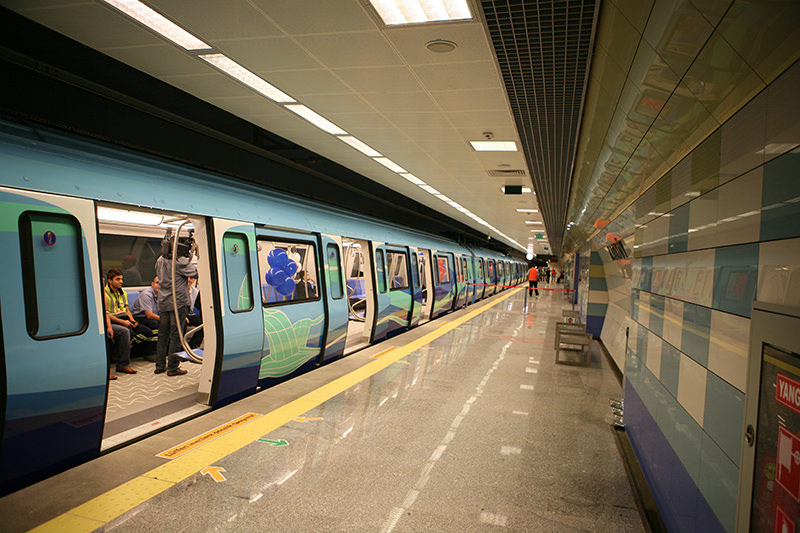Turkey's first driverless metro line to be put into service in Istanbul by end of 2016

The driverless automated metro line, scheduled to come into service by the end of 2016 in Istanbul, will become a Turkey first of its kind.The Üsküdar-Ümraniye-Çekmeköy-Sancaktepe line will be the second metro line on the Anatolian side of Istanbul and will mark another first by incorporating 'automated platform gates'.The automated platform gates are chest-height sliding doors that prevent passengers from falling off the platform edge onto the railway tracks. These platform gates slide open and close simultaneously with the train's doors.Announcing the news on Tuesday, the Istanbul Metropolitan Municipality stated that the travel time between the Üsküdar and Sancaktepe districts will be decreased to 24 minutes.As the metro will have no driver, passengers will be able to sit in driver's compartment and watch the train's journey throughout the 2,750 meter-long tunel.The station and wagons will be under 24-hour surveillance.The driverless metro line will be able to reach speeds up to 90 kilometers per hour and will be operated from a command center that will see the operation of the 16-station line covering 20 kilometers.The 126-wagon train's stops will be: Üsküdar, Fıstıkağacı, Bağlarbaşı, Altunizade, Kısıklı, Libadiye, Çarşı, Ümraniye, İnkılap Mahallesi, Çakmak, Ihlamurkuyu, Altınşehir, Lise, Dudullu, Toplu Konutlar, Çekmeköy and Sancaktepe.The Üsküdar-Sancaktepe metro line's construction is continuing 24 hours non-stop, with 2,430 personnel working to complete 11 stations in the first stage.When the construction is finished passengers will be able to travel from Çekmeköy-Sancaktepe to Üsküdar in 24, to Kartal in 59, Yenikapı in 36, Taksim in 44, Hacıosman in 68, the Atatürk International Airport in 68 and the Olympic Stadium in 78 minutes.The world's longest driverless train route is in Dubai at 80 kilometers and many countries have driverless train lines, although a driver is added occasionally in some countries for fear of possible failures in the system.
Last Update: February 10, 2016 10:50
